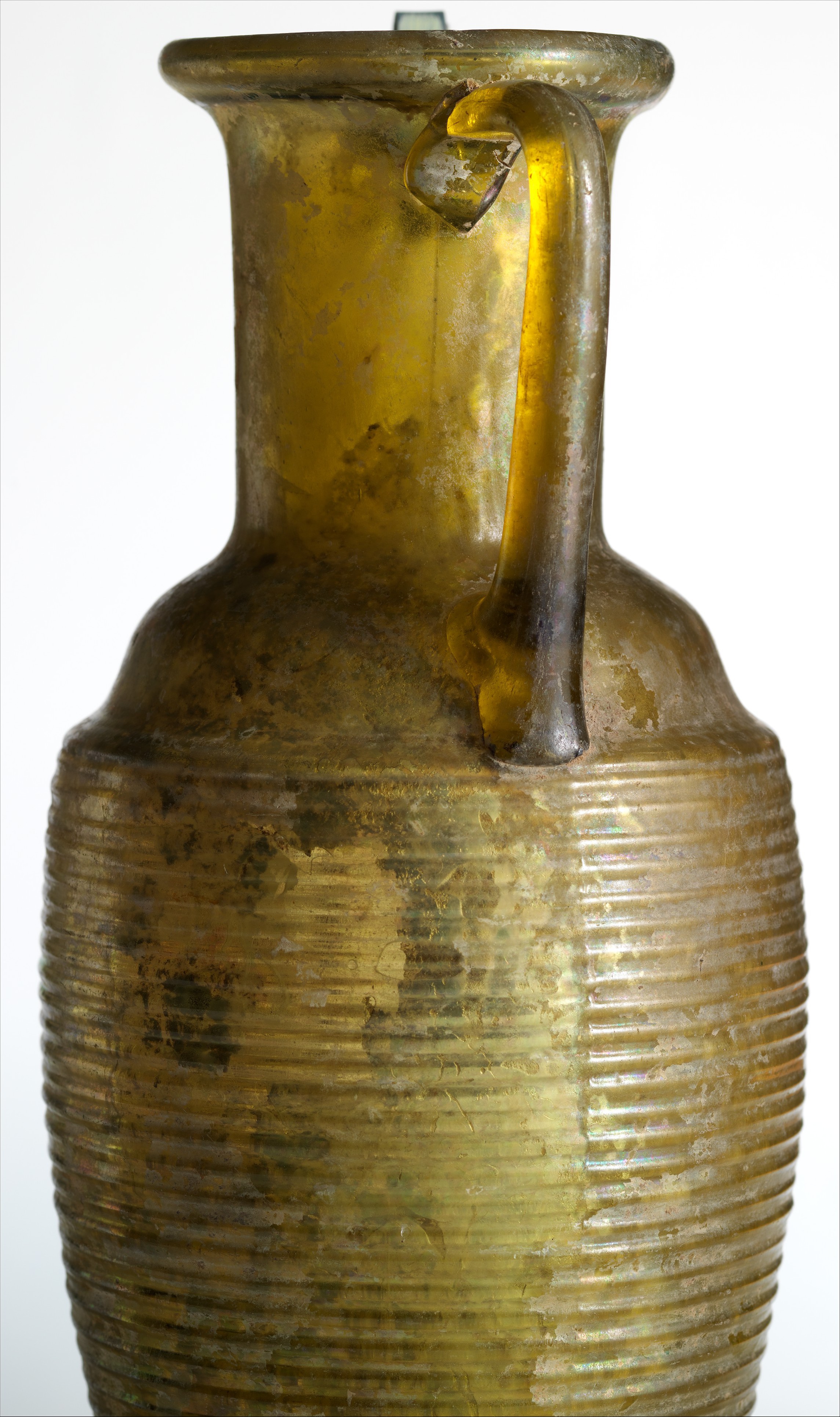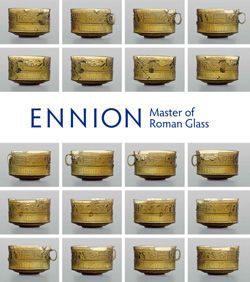Glass amphora (jar)
Translucent yellow green; handles in same color
Everted tubular rim, folded over and in; broad, cylindrical neck; convex bulging shoulder; elongated ovoid body tapering to a point; two rod handles applied as pads on shoulder, drawn up and slightly out, then turned in horizontally and pressed on to top of neck and underside of rim.
Thirty-four close-set horizontal ribs, extending from shoulder to lower body, then a plain band before a narrow group comprising one prominent horizontal rib flanked above and below by another shallower rib.
Base or foot missing and crack in top of one handle, otherwise intact; a few bubbles; some dulling, faint weathering, and iridescence on exterior, soil encrustation and iridescent weathering on interior.
Probably made in a three-part mold, comprising two side elements extending from neck to bottom of main ribbing on body and a cup-shaped bottom. It is uncertain whether the vessel had a knob base or a foot, but the former is more probable.
This is an unusually large mold-blown glass vessel, for which no parallel is known. But the quality of the piece suggests that it may be associated with a leading workshop, such as that of Ennion. Three of his products are displayed in the adjacent Augustan gallery.
Due to rights restrictions, this image cannot be enlarged, viewed at full screen, or downloaded.
This artwork is meant to be viewed from right to left. Scroll left to view more.





